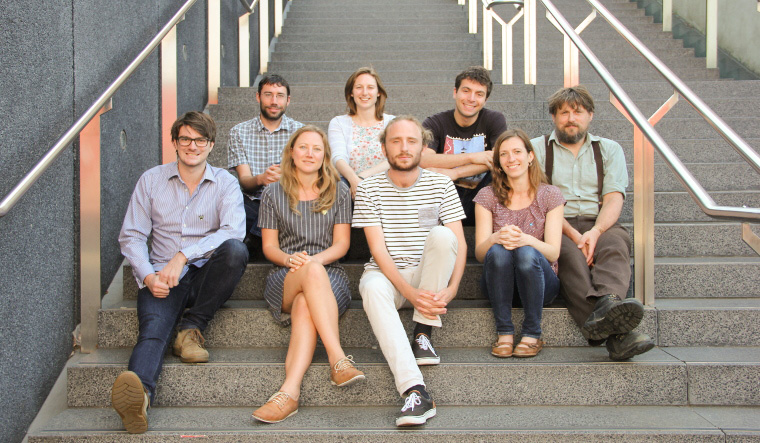By Jonathan Goodman
Never do things by halves, jump in the deep end, give it a go, eat your vegetables, trust your supervisors. This is all good advice and I now realise I must have taken it, having presented at the first conference I have ever attended, then attending another conference three days later run by an organisation I had never heard of before. I have also joined the Te Pūnaha Matatini Whānau committee based solely on my supervisor’s advice. Before I go on, I must admit that all of these actions have proved to be worthwhile and rewarding.
The first conference was the Te Pūnaha Matatini cross-theme hui. This was the first Te Pūnaha Matatini gathering I have attended since joining the Centre of Research Excellence as a PhD student at the start of the year. The hui consisted of a series of short talks, including my first at a conference, interspersed with four rounds of the “Research Knockout” – a game designed by Alex James. The game started with the creation of teams of 3-5 researchers from Te Pūnaha Matatini’s three research themes. Each team then generated a potential research project. Each round of the knockout consisted of pairing up the groups and amalgamating their ideas into an enhanced version. This continued until there were just two groups remaining. In the grand finale, there was a final presentation followed by a vote. The winning research topic was ‘Measuring the impact of the communication of science’.
The question of science outreach also came up at the conference run by the New Zealand Association of Scientists (NZAS). The conference was held at Te Papa in Wellington and celebrated the 75th anniversary of the Association. The conference had a selection of engaging speakers looking at the role of scientists in the past, the present, and into the future. A number of speakers talked about science communication.
One of the presenters, Simon Nathan, spoke about James Hector and how he effectively pushed the cause of New Zealand science, through his role of Chief Government Scientist, by constantly reminding politicians about the value of science. Rebecca Priestley talked about how science outreach was different back in the days of the Department of Scientific and Industrial Research (DSIR). Instead of scientists engaging in outreach programs, interested journalists and citizens would phone and be able to speak directly with the scientist who was in the best position to answer their queries. Te Pūnaha Matatini’s own Shaun Hendy presented on how social media is currently the only way scientists are able to directly communicate with the population without the risk of their message being obscured. His three guidelines for public engagement were very apt.
Researchers should:
1) Not be d!@#s
2) Get on social media
3) See rule number 1.
The other major theme of the conference was the structure of the pathways inside and outside academia for emerging researchers. I will touch on this in another blog post on the Te Pūnaha Matatini Whānau page.
Having had a rewarding weekend forming connections with talented scientists, and with the science community as a whole, I will sign off hoping that I have followed Shaun’s rules.
Jonathan Goodman

